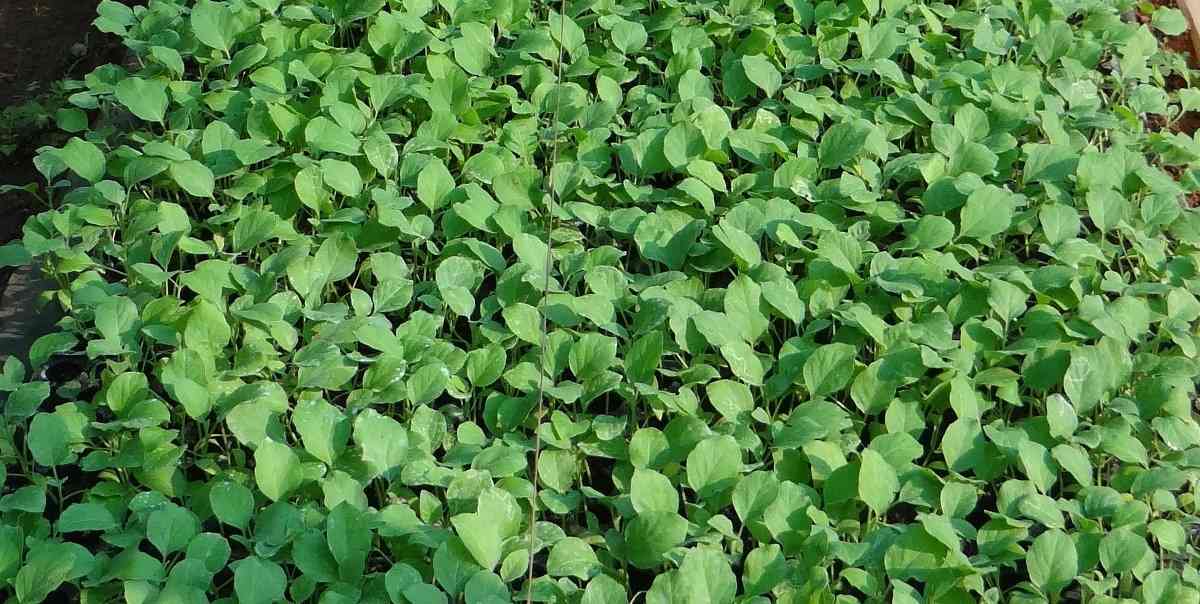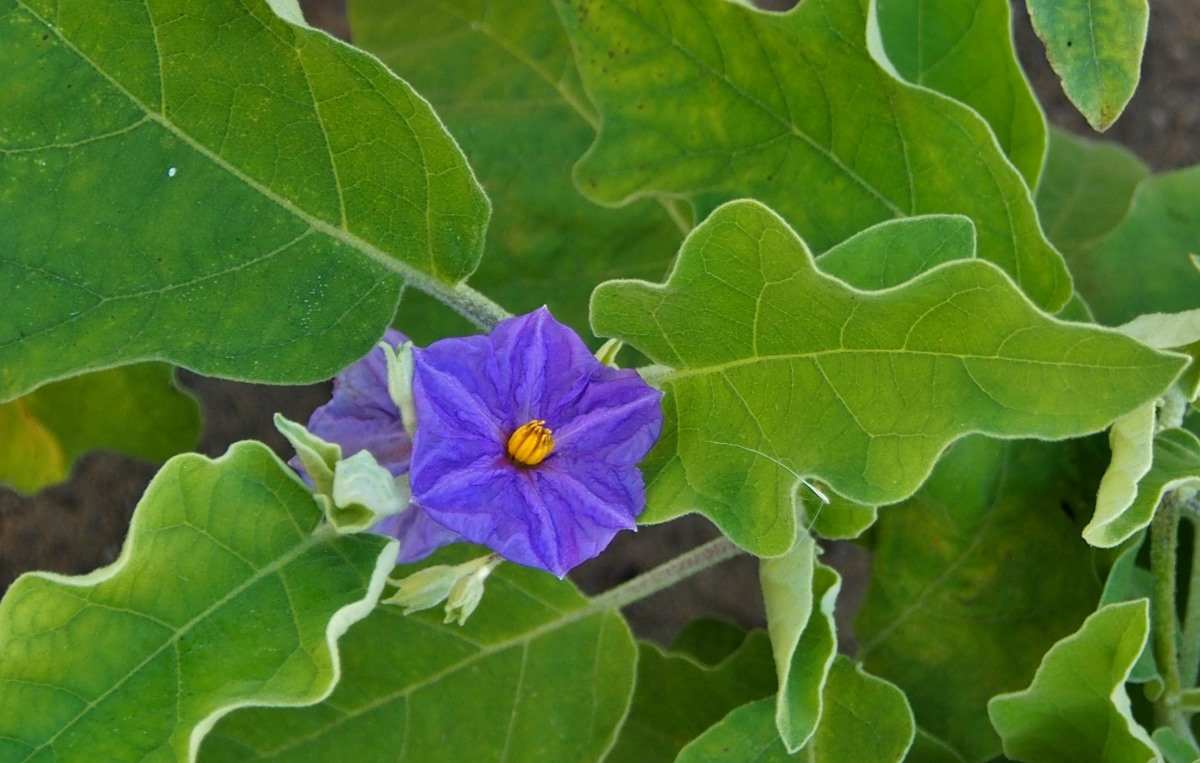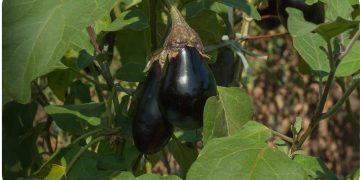Growing Eggplant from Seeds
Hello gardeners, we are here back with a new interesting topic that is called growing eggplant from Seeds at Home. Do you want to know how to grow eggplant? Well, then you need to follow this complete article. In this article, we will also mention all the requirements for growing eggplant.
Introduction to Growing Eggplant
The eggplant may be one of the most misconstrued vegetables and it is surely not a common sight in most home gardens. The quantity of time it takes for eggplants to grow maybe one cause them to grow eggplants. Take seeds from survive eggplants at the end of the growing season and start them indoors. Wait a couple of weeks after the last frost to make certain warm weather is on the way before transplanting in the garden since eggplants require warm soil to grow. This information may help you to grow eggplants in the Pots/Containers, Polyhouse, Greenhouse, Terrace, Balcony, and Backyard.
A Step-By-Step Planting Guide for Growing Eggplant from Seeds
Eggplant is also known as Solanum melongena or brinjal are warm-weather vegetables that are harvested in mid-to-late summer. Eggplant tastes very best when harvested young. See more about growing and harvesting these lovely deep purple vegetables one of our sweet on the grill.
A typical eggplant is deep purple and pear-shaped, but when you grow your own, you can try a plentitude of other colours and shapes, from lengthening lavender-and-white to the circular, violet-blushed. But to replace them with eggplants, you will require providing them with consistently warm growing conditions for at least three months. Eggplants growing in cold soil or exposed to chilly weather will sulk and certainly suffer from insect and disease problems.
Associated with peppers, tomatoes, and potatoes, but eggplant is a member of the nightshade family, think that to have originated in India. It needs warmth and a long growing summer season, which can make it difficult to grow in cooler climates. However, it is very easy to propagate under the right situations.
Overview Table of the Eggplant is Given Below
| Botanical Name | Solanum melongena |
| Common Name | Eggplant and Brinjal |
| Plant Type | Vegetable |
| Sun Exposure | Full sun |
| Soil Type | Loamy and Sandy |
| Soil pH | Slightly Acidic to Neutral |
| Bloom Time | Summer |
| Flower Color | Purple and white |
Varieties/Types of Eggplant to Grow
- Sicilian: This is very smaller than Solanum melongena with an extensive base and skin mark with purple and white. It is also called Graffiti eggplant.
- Italian eggplant: This has a green calyx with skin a very deep mauve-purple with some bright light dappling on the skin. It’s a very smaller, more oval variety than the regular or classic varieties.
- White eggplant: This includes Albino and White Beauty and, as put forward, have smooth, white skin. They may be round or moderately thinner and longer skin than their Italian eggplant cousins.
- Indian eggplant: which are very small, generally a few inches long, and round to oval shape with dark purple skin and a green calyx.
- Japanese eggplant: which is fruit is very small and long, with soft, light purple skin and dark, purple calyx. Ichiban is one such planting with skin so tender, it requires not to be peeled.
- Chinese eggplant: which are circular with purple skin and calyx.
Suitable Container for Growing Eggplant from Seeds
one of the most important components of container-grown eggplant is the container. Pick a very large container with a 5-gallon and 18 liters capacity. Growing eggplant in containers needs to 12 to 14 inches and 30 to 35 cm. of space per eggplant or three eggplants can be placed in 20-inch and 50 cm. containers. Unglazed containers dry out more fastly than glazed containers, but they also allow the evaporation of unwanted moisture. If you remember to water, pick the unglazed container. If you are a forgetful watered, choose the glazed container. Make certain there are very large, unblocked drainage holes.
Eggplant starts are the very best way to go unless you live in a sunny climate as they will give you a jump start on the growing summer season. The best medium for container-grown eggplant is two parts very good quality potting soil and one part sand. This makes sure adequate nutrients and water holding while supporting the draining of unwanted moisture. Plant the eggplant at the same level they were in their nursery containers and put a handful of time-release fertilizer in the drainage hole at the time of planting. Water the container well and install a small maintenance system, like a tomato cage.
Suitable Soil for Growing Eggplant from Seeds
Eggplant present well-drained, fertile, sandy loam soils with a pH between 5.5 and 7.2 acidic to neutral. Reduce all weeds and till the loamy soil loosen it to a depth of 6 to 10 inches. The higher the organic matter content of the loamy soil the better to absorb a 3- to 4-inch layer of compost if possible.
Eggplant prefers loamy soil that’s on the acidic or neutral side. A home loamy soil test kit or soil test meter can regulate your soil’s pH level. If it is higher than 6.5, add about 1 pound of sulphur per 100 square feet for every point by which you require to lower the pH. If the soil test kit registers the pH as lower than 5.5, use 5 pounds of ground limestone per 100 square feet for every point by which you require to raise the pH.
Sunlight Requirement for Growing Eggplant from Seeds
Eggplants are sun lovers. Ensure they get at least six hours of unclosed sun per day the more sun the very better. Eggplant loves the sunlight. It is perfect to place your Eggplant especially when they are about 3 to 5 inches tall in a spot with full sun exposure.
Temperature Requirement for Growing Eggplant from Seeds
It thrives in full sun and needs at least five months of warm weather for fruit production. The best daytime growing temperature ranges between 21°C and 29°C. When temperatures rise above 35°C, eggplant ceases to set fruit and may down flowers or abort immature fruit.
Planting Procedure of Growing Eggplant from Seeds

The seedlings are hardened off before planting; uncover the eggplants to the outdoor environment a very little more each day before they are placed there permanently. For winter-sown seeds started in plastic containers outdoors, this step is already completed. In cooler climates or spring seasons, the loamy soil is warmed before planting by placing black plastic over it for particular weeks. Eggplants are also doing well in containers. About an hour ahead of transplanting, the eggplant seedlings are entirely watered and allowed to well-drained, then transplanted to an area of partial shade in rich well-drained soil. While eggplants can grow in a range of soil types, the plant placed slightly acidic soil a pH of 6.0 to 7.0 is best and rich in organic matter, such as compost. It is best to plant the seedlings on a cloudy day and provide partial shade for particular days to avoid burning the new plants. Shielding the seedlings from wind is also suggested.
Water Requirements for Growing Eggplant from Seeds
Eggplants are very best watered approximately 1 inch per week during the growing summer season. This quantity may increase during times of hot, dry weather. Observing the loam soil with a moisture meter will help make sure that the loam soil does not become dry between watering. Young eggplants will require to be watered twice a week, to the underground of 12 inches. Eggplants do not like standing water, so grown-up plants should be watered deeply and continually. But do not allow the eggplant leaves to sag during the day. Most healthy plants, however, will take back from the leaf damage.
How to Prune an Eggplant?
Pruning eggplant stems is very best done when the eggplant is traditional and has already borne some fruit. If your eggplant has already gone through a period of manufacture and seems like it’s starting to fade off, this is a good time to do some trimming.
When pruning an eggplant, the regular shape to go for has three stems. You should leave the first main separation, where the first two stems divide from the base, as well as one other strong stem. Reduce all others. This can seem a little extreme at first, but the eggplant should come back from it fastly with a new batch of leafy growth and fruit.
Tips and Care for Growing Eggplant from Seeds
- Eggplant will fall over once packed with fruit be sure to stake tall eggplants or use a cage to keep the eggplants upright. If growing eggplant in containers stakes the stems before the fruit shape.
- For bigger fruits, restraint to five or six per eggplant.
- Pinch out the extreme growing points for a bushier eggplant.
- Water well to moisten the loamy soil to a depth of at least 6 inches so the soil is moist but never soggy. Consistent watering is very best, and a soaker hose or drizzle at ground level is perfect.
- The critical period for the moisture is during fruit set and fruit evolution. Mulching can help to supply uniform moisture, conserve water and remove weeds.
- Apply a balanced fertilizer twice during the growing summer season. Side-dress when the first fruits are about the size of a quarter, using 3 particles of calcium nitrate per 10 feet of row. Side dress again in about two to three weeks.
Best Fertilizer for Eggplant
Eggplants grow very best in compost-rich, fertile soil under full sun. Feeding eggplants during their growing and fruiting stages better the overall health of the eggplant. Healthy plants supply very larger fruit in greater amounts. Also, when growing some different varieties of eggplant, fertilizer may remove bitterness avoid by plant stress.
Soil testing supplies an NPK analysis, which tells gardeners how much nitrogen, phosphorus, and potassium, is required to balance and amend their garden loamy soil. Eggplants use nitrogen for green growth and the construction of chlorophyll. Phosphorus benefits the formation of new roots and is used in flower, fruit, and production. Potassium will contribute to stemming strength, disease resistance, and growth.
Common Pests and Diseases for Growing Eggplant from Seeds
Prone to unpleasant, loamy soil-borne verticillium sag, this disease should not be a problem if you use high-quality potting loamy soil. These pests and diseases are fairly very common in regular garden soil. Also, consistent watering is basic to continued eggplant health.
If you see tiny round holes in the leaves of the eggplants early in the summer season, you could have flea beetles, but again, this is not likely to take place with potted eggplants that use sterile potting soil.
When and How to Harvest Eggplant
Eggplant comes in an extensive range of sizes, colours, and shapes. It can be white, purple, nearly black, bright green, and spotted. Here eggplants are round, long and thin, or pear-shaped. You will require knowing what kind of eggplant you have planted to know when to harvest it. The different varieties incorporate Fairy Tale, Hansel, Gretel, Rosa Bianca, Little Fingers, and position Express.
A good rule of thumb is to choose eggplant when the skin appears glossy and the fruit has very little give when you crush it. You do not want to choose eggplant before it is ripe. Generally, choose it when it is on the very smaller side.
Commonly Asked Questions about Growing Eggplant from Seeds
In case if you miss this: Vegetable Fertilzier Requirements.

Can you grow eggplant?
To cut off some of the time it takes to planting eggplants, some gardeners normally grow them from cuttings instead of seed. To grow eggplants, first, take your seeds from existing eggplants at the end of the growing summer season and start them indoors. Do not put more than two or three seeds in each flask.
What should you not plant next to eggplant?
Eggplant is very good associated with amaranth, beans, marigolds, peas, peppers, spinach, and thyme. Do not plant eggplants almost the fennel. Fennel is not associated with any garden food plant; fennel will hold back growth in bush beans, kohlrabi, tomatoes, and others.
Can Eggplant be grown in pots?
Even if you garden in a very small garden bed, or grow your vegetables in containers on the terrace or balcony, you can grow eggplant. You need to plant one eggplant per container, 2-gallon minimum. Fill the container with high-quality potting soil that will drain fastly.
How do you make eggplant grow faster?
Thanks to their broad or bushy leaves, eggplant is growing fastly, gaining size faster than tomatoes or peppers. If you have a long, warm growing summer season and use a split season planting plan, you can start plant in midsummer for fall down. Set out the eggplants out during a spell of cloudy weather.
Should I pinch off eggplant flowers?
Even if you don’t want to cut back your eggplant extremely, it is a very good idea to reduce suckers. Pinching off these suckers when they are small will allow the plant to focus more of its energy on fruit produces, resulting in very larger, more impressive eggplants.
How do you protect eggplant from insects?
If eggplant damage is present, vacuuming the bottom side of the eggplant leaves daily can protect more eggplants from hatching. Neem oil may also be a somewhat effective deterrent for flea beetles.
What do you spray on eggplant leaves?
Organic choices are neem oil, garlic-based drizzle, and rotenone, pyrethrins, and Pyola canola oil and pyrethrins combo from natural. You might need to spray every week or so through August when flea beetles taper off for the season.
How do you manage eggplant?
Water daily, especially when the eggplants are very young so that they develop deep roots. Avoid overhead watering to protect against disease, but consider using mulch to keep the soil moist, warm, and to keep away from weeds down. Normally, eggplants should get an inch 2.5 cm. of rain or watering per week.































